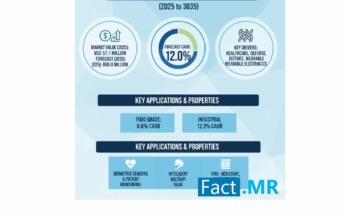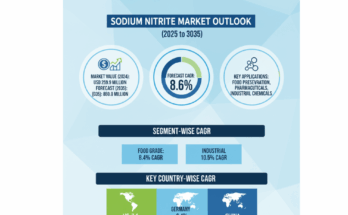The Lion’s Mane market is poised for a decade of strong expansion, rising from USD 680.0 million in 2025 to USD 1,380.0 million by 2035, registering a compound annual growth rate (CAGR) of 7.3%. This steady upward trajectory reflects growing global demand for functional foods, cognitive health supplements, and natural nootropics derived from Hericium erinaceus, widely known as Lion’s Mane mushroom.
The first half of the forecast period (2025–2030) will see the Lion’s Mane market grow from USD 680.0 million to around USD 970.0 million, representing an addition of USD 290.0 million — roughly 41% of total projected expansion. This phase will be driven by increasing awareness of cognitive health, the rising adoption of extract-based Lion’s Mane products, and the global shift toward natural brain health solutions.
From 2030 to 2035, the market is expected to add another USD 410.0 million, reaching USD 1,380.0 million, supported by widespread consumer adoption, product standardization, and advanced integration of Lion’s Mane into mainstream supplement and wellness systems.
Functional Foods and Nootropic Supplements Lead Market Growth
The Lion’s Mane market is transitioning from niche wellness circles into mainstream health and nutrition channels. Extracts now represent the leading product form, commanding approximately 52% market share due to their bioavailability, potency, and compatibility with cognitive health formulations. Capsule formats follow with a 28% share, providing convenience and standardized dosing for consumers seeking reliable daily supplementation.
Applications remain concentrated in cognitive supplements, which account for roughly 44% of total demand, reflecting Lion’s Mane’s well-documented neuroprotective and nootropic benefits. Functional food and beverage applications capture about 31% market share, while other uses — including personal care and specialty wellness — make up the remaining 25%.
Regional Outlook: North America and Europe Lead, Asia Pacific Rising
North America remains the largest regional Lion’s Mane market, supported by wellness innovation, consumer education, and a mature supplement ecosystem. The United States leads with a robust 7.7% CAGR, followed by Mexico at 7.3%, driven by expanding wellness infrastructure and government-backed cognitive health initiatives.
In Europe, the Lion’s Mane market is forecast to rise from USD 150.0 million in 2025 to USD 305.0 million by 2035, representing a 7.4% CAGR. Germany leads European growth with advanced supplement technology and wellness integration, maintaining about 31% of regional share, followed by France (19.7%) and the United Kingdom (17.5%). Italy and Spain show incremental growth driven by modernization in food and supplement manufacturing.
The Asia Pacific Lion’s Mane market continues to strengthen through traditional medicine influence and increasing interest in nootropic wellness. Japan and South Korea demonstrate stable expansion, while China and India are emerging as new manufacturing and consumption hubs due to expanding middle-class health awareness and natural product adoption.
Growth Drivers and Challenges
The key driver behind the Lion’s Mane market surge is rising cognitive health awareness. Consumers are increasingly turning to natural nootropic products to enhance memory, focus, and neurological wellness without synthetic additives. This shift aligns with broader trends toward clean-label supplements and functional foods that promote both performance and long-term brain health.
The modernization of the supplement industry further amplifies market growth. Retailers and manufacturers are integrating advanced mushroom extraction technologies and automated wellness systems, ensuring higher bioactive consistency and compliance with global quality standards. Food producers are also incorporating Lion’s Mane into fortified snacks, beverages, and nutrition products to cater to consumers seeking functional benefits.
However, the Lion’s Mane market faces challenges in cultivation complexity and extraction standardization. Production requires controlled agricultural environments and advanced processing systems, which can limit scalability in regions lacking infrastructure. Bioactive variability remains another restraint, as maintaining consistent potency across formulations demands precision extraction and stringent quality control measures.
Key Opportunity Pathways
The decade ahead presents multiple growth pathways for the Lion’s Mane market, with strategic opportunities in extract optimization, localized production, and cognitive supplement integration.
- Extract Optimization and Advanced Processing: Strengthening extraction technology enhances potency, stability, and bioavailability. Advanced bioactive concentration methods are expected to generate between USD 97–131 million in new revenue by 2035.
- North American Expansion: Localized production and wellness partnerships across the U.S. and Mexico could add USD 75–101 million in revenue potential.
- Cognitive Supplement Leadership: Premium formulations tailored for brain health are projected to create USD 63–85 million in additional opportunities.
- Functional Food Integration: Diversifying into food and beverage applications may generate USD 53–71 million, particularly through fortified products and functional beverages.
- Online Distribution Innovation: Direct-to-consumer e-commerce strategies, now comprising 47% of distribution, are reshaping sales and accessibility for mushroom-based wellness products.
Competitive Landscape
The Lion’s Mane market is moderately consolidated, with around 9–11 major players controlling roughly 35–40% of global share. Market leaders such as Host Defense, Nammex, and Real Mushrooms dominate through advanced extraction technologies and strong wellness distribution networks.
Innovators including FreshCap, Aloha Medicinals, and Oriveda focus on specialized extraction systems and novel bioactive applications, while regional specialists like Om Mushrooms, Gaia Herbs, and Solaray cater to localized wellness programs and niche cognitive health applications.
Competition increasingly emphasizes technological differentiation and wellness integration rather than pricing. Companies investing in extraction consistency, quality assurance, and sustainability are best positioned to capture long-term gains in the expanding Lion’s Mane market.
Outlook
By 2035, the Lion’s Mane market is expected to evolve into a fully integrated component of the global wellness economy. With growth led by extract-based supplements, functional foods, and direct-to-consumer models, the industry’s expansion underscores a broader transition toward natural cognitive enhancement and holistic brain health.
As technology, wellness infrastructure, and consumer awareness align, Lion’s Mane stands out as one of the most promising natural ingredients shaping the future of the functional food and supplement industries.
Browse Full Report : https://www.factmr.com/report/1117/lions-mane-market



